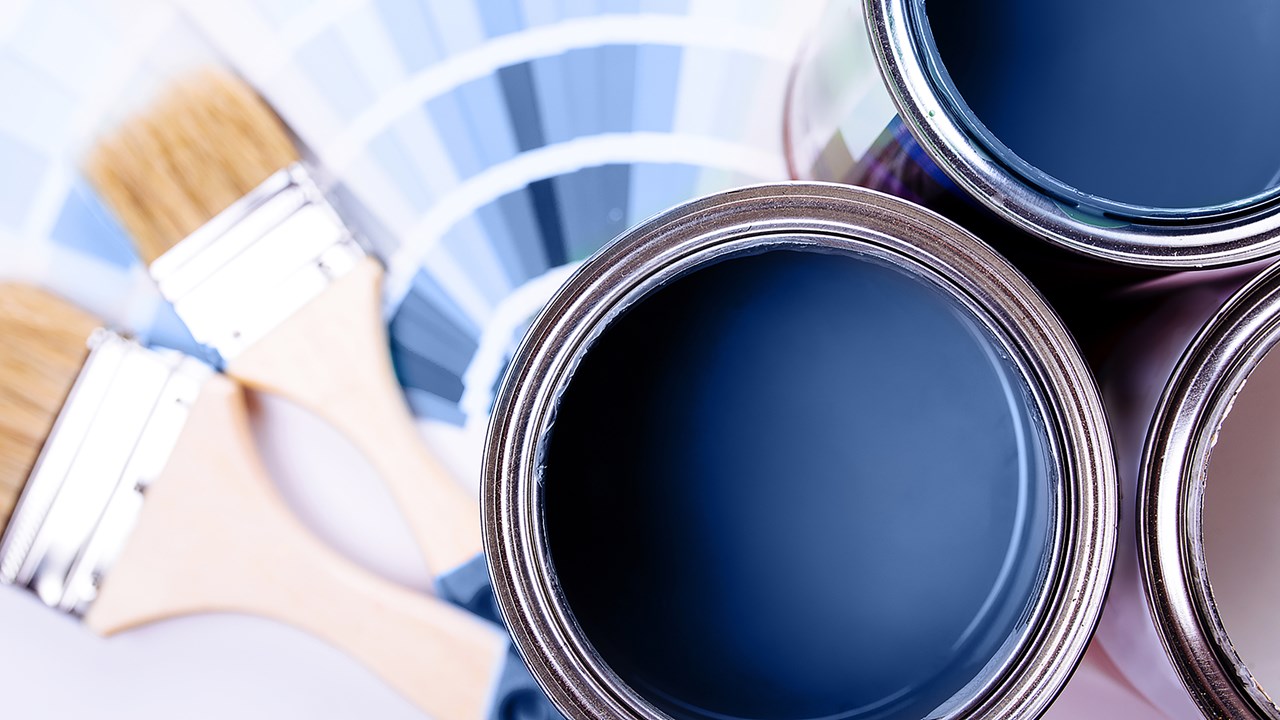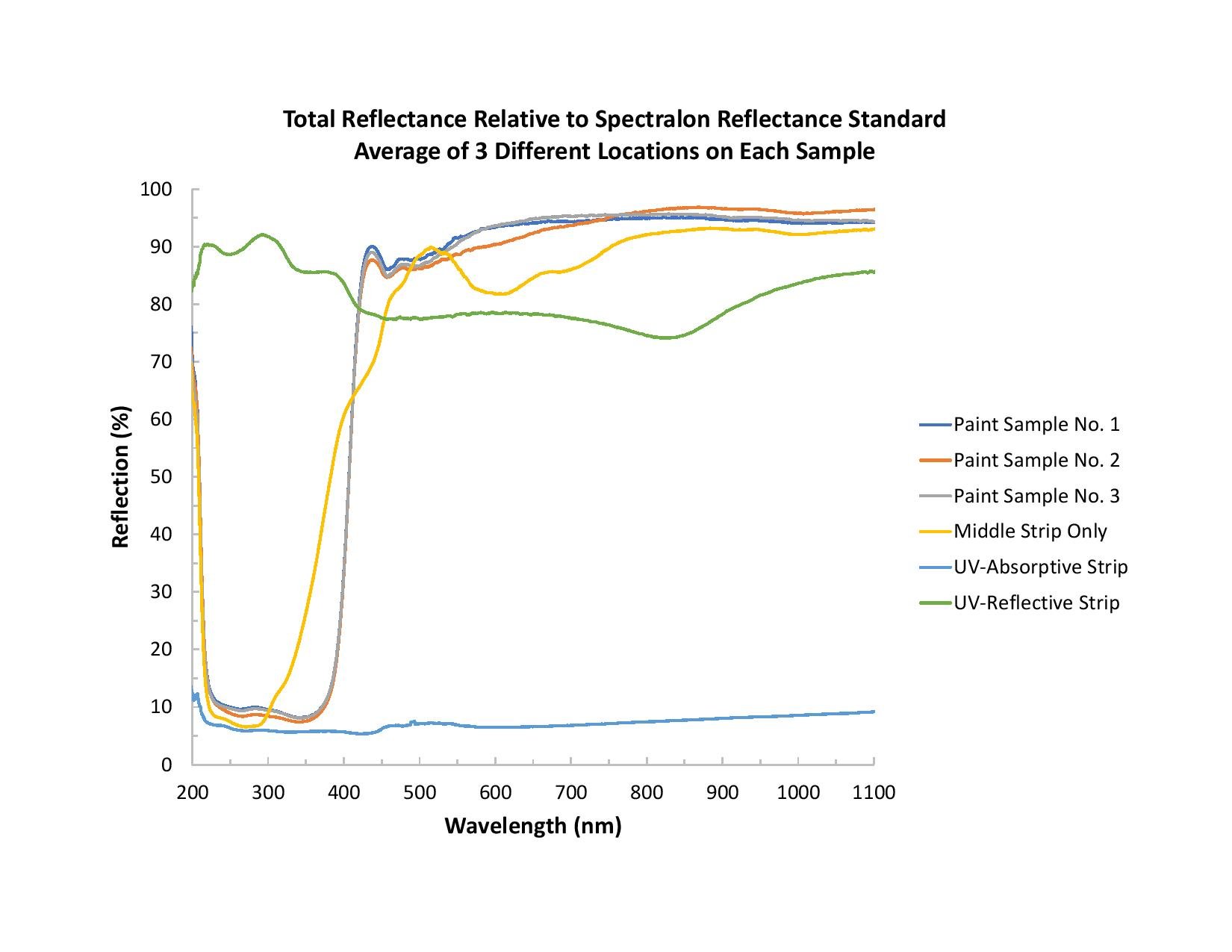Subscribe to Our Blog
Receive updates from our team as we share application notes, customer spotlights, educational tools, spectroscopy how-to’s, and more.

In this application to analyze paint formulations, an Ocean Optics spectrometer setup measures the reflectance of painted surfaces.
IMPORTANT: PLEASE REFRESH YOUR BROWSER IF YOU DO NOT SEE ANY IMAGES/SCREENSHOTS/SPECTRA ON THE PAGE.
Paint and coating materials comprise components including pigments, dyes, fillers and binders, with careful mixing of each element contributing to product quality and performance. The ability to evaluate different paint formulations and UV-protective coatings within minutes versus hours can make a big difference in development time and cost.
For fast, convenient assessment of paint samples on flat surfaces and substrates, we used an extended-range (UV-Visible-NIR) spectrometer with a broadband light source, integrating sphere for reflectance, and diffuse reflectance standard. This modular setup allowed us to quickly characterize the diffuse, specular and total reflectance characteristics of each sample.
Because integrating spheres attenuate light levels significantly during reflectance measurements, we selected the Ocean HDX-XR as our spectrometer, for its great sensitivity from 200-1100 nm. The additional slit provides versatility.
The ISP-50-8-R-GT integrating sphere has a 50 mm sphere diameter and gloss trap to enable diffuse and total reflectance measurements. The 600 um core diameter of the fibers matches the optical needs of the integrating sphere, while the fibers' extreme solarization-resistant properties mitigate degradation that can occur in fibers in the UV region. The STAN-HOLDER is a convenient accessory that can act as both a reflectance standard holder and a sample stage.
We analyzed five samples applied to flat surfaces: three different white paints, a highly reflective UV aluminum strip, and a highly absorptive UV strip.
Samples were measured with an integrating sphere containing a gloss trap, so both total reflectance (gloss trap closed) and diffuse reflectance (gloss trap open) could be measured for samples applied to the middle strip (area) of the flat surfaces. Also, measurements were made for high and low UV reflectivity samples and for the top, middle and bottom strips (no paint applied) of the surfaces. Each sample was measured at three different locations and the spectral data averaged.
All samples were referenced to a Spectralon reflectance standard, which was held in a reflectance standard holder. Solarization-resistant fibers were used to connect the light source and spectrometer to the applicable ports on the integrating sphere. The integrating sphere was then inverted so the port of the sphere could be placed on the sample supported by the reflectance standard holder.
Reflectance was measured for three different locations on each sample with the gloss trap open and then closed (Figure 1). To avoid setup variability due to fiber movement during the measurements, the sphere was lifted slightly to change samples instead of moving the sphere between samples.

Figure 1. The total reflectance spectra here are the average of spectra measured at three locations in the middle strip of a flat surface. Data was also acquired for the paint applied to the areas above and below the middle strip. There may be some error in the reflectance data associated with a missing gloss trap piece for the integrating sphere, which we addressed by slightly modifying the accessory.
There’s a lot more to paint than how fast it dries or what a certain color will look like in your living room. For example, paint has additives designed to absorb UV wavelengths, helping to prevent fading and degradation, and even providing disinfection properties. With a broadband spectral system helping paint researchers to test new formulations more efficiently, manufacturers can produce higher quality, longer-lasting and safer paints.
Preconfigured Ocean HDX Spectrometers
Options available
Deuterium-Tungsten Halogen Combination Sources are high output, high stability light sources for UV, Visible and NIR applications.
Prices From $4,176.00
Options available
Integrating Spheres for Reflectance
Prices From $83.00
Options available
Reflectance standards are available for diffuse or specular reflectance applications. To ensure best results, select a standard with reflectivity comparable to the sample to be measured.
Prices From $468.00
In this video, we guide users through the basic steps necessary to perform both diffuse reflectance and color measurements using Ocean Optics spectrometers and accessories.
Learn key tips on how to get the best reflectance results possible using Ocean Optics spectrometers and accessories.

Receive updates from our team as we share application notes, customer spotlights, educational tools, spectroscopy how-to’s, and more.